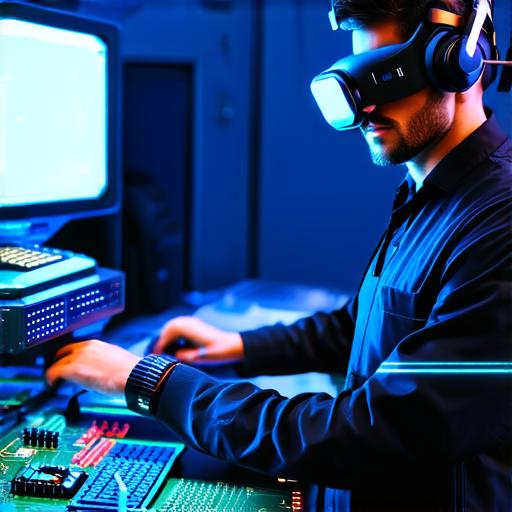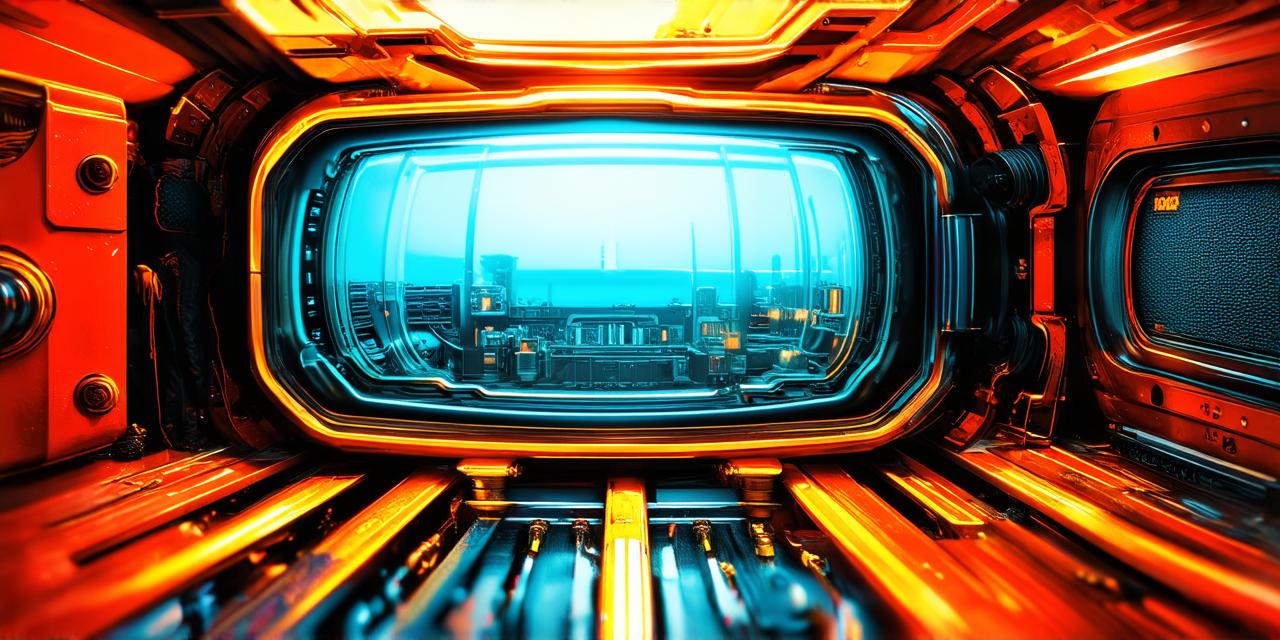Introduction
Virtual reality (VR) is a technology that creates an immersive experience for users by simulating a three-dimensional environment. The concept of virtual reality has been around for decades, but it wasn’t until the 1960s that the first VR systems were developed. In this article, we will explore the origins of the term virtual reality and how it has evolved over time.
The Origin of Virtual Reality

The term “virtual reality” was coined by computer scientist Jaron Lanier in 1983. However, the concept of creating a simulated environment dates back to ancient times when people used mirrors and lenses to create optical illusions. In the early 20th century, scientists such as Ivan Pavlov and B.F. Skinner began experimenting with virtual environments to study human behavior.
In the 1960s, computer scientists such as Ivan Sutherland and William Higinbotham developed the first VR systems. These systems used head-mounted displays (HMDs) to create a three-dimensional environment that users could explore. One of the earliest VR systems was the “Sword of Damocles,” which was created by Ivan Sutherland in 1968. The system used a wireframe and a projector to simulate a virtual world.
The Evolution of Virtual Reality
Virtual reality technology has come a long way since its early days. Today, VR systems are more advanced and affordable than ever before. Some of the key developments in VR technology include:
- Wireframe displays: Early VR systems used wireframe displays to simulate a virtual world. These displays were simple but effective.
- Head-mounted displays (HMDs): HMDs are worn on the head and provide a three-dimensional view of the virtual environment. They have become more advanced over time, with higher resolution displays and better tracking.
- Hand tracking: Early VR systems required users to hold on to sensors to track their movements. Today, hand tracking technology allows users to move their hands freely in the virtual environment.
- Motion capture: Motion capture technology uses cameras and sensors to track the movement of an object or person in real-time. This technology has been used in VR to create more realistic and immersive experiences.
- Wireless systems: Early VR systems required a wired connection to a computer. Today, wireless systems allow users to move around freely without being tethered to a device.
- Haptic feedback: Haptic feedback technology allows users to feel sensations in the virtual environment. This can include vibrations, pressure, and temperature changes.
- Augmented reality (AR): AR is a technology that overlays digital content onto the real world. It has been used in VR to create more interactive and immersive experiences.
Case Studies
There are many examples of how virtual reality technology has been used in various industries. Here are a few:
- Healthcare: Virtual reality is being used in healthcare to treat phobias, anxiety disorders, and post-traumatic stress disorder (PTSD). It is also being used to train medical professionals in surgery and other procedures.
- Education: Virtual reality is being used in education to create immersive learning experiences. It can be used to simulate historical events, scientific experiments, and cultural experiences.
- Gaming: Virtual reality gaming has become increasingly popular in recent years. VR games offer a more immersive experience than traditional games, allowing users to feel like they are actually in the game world.
- Architecture: Virtual reality is being used in architecture to create virtual walkthroughs of buildings and to visualize design concepts. It can also be used to simulate how a building will look and function in different environments.
